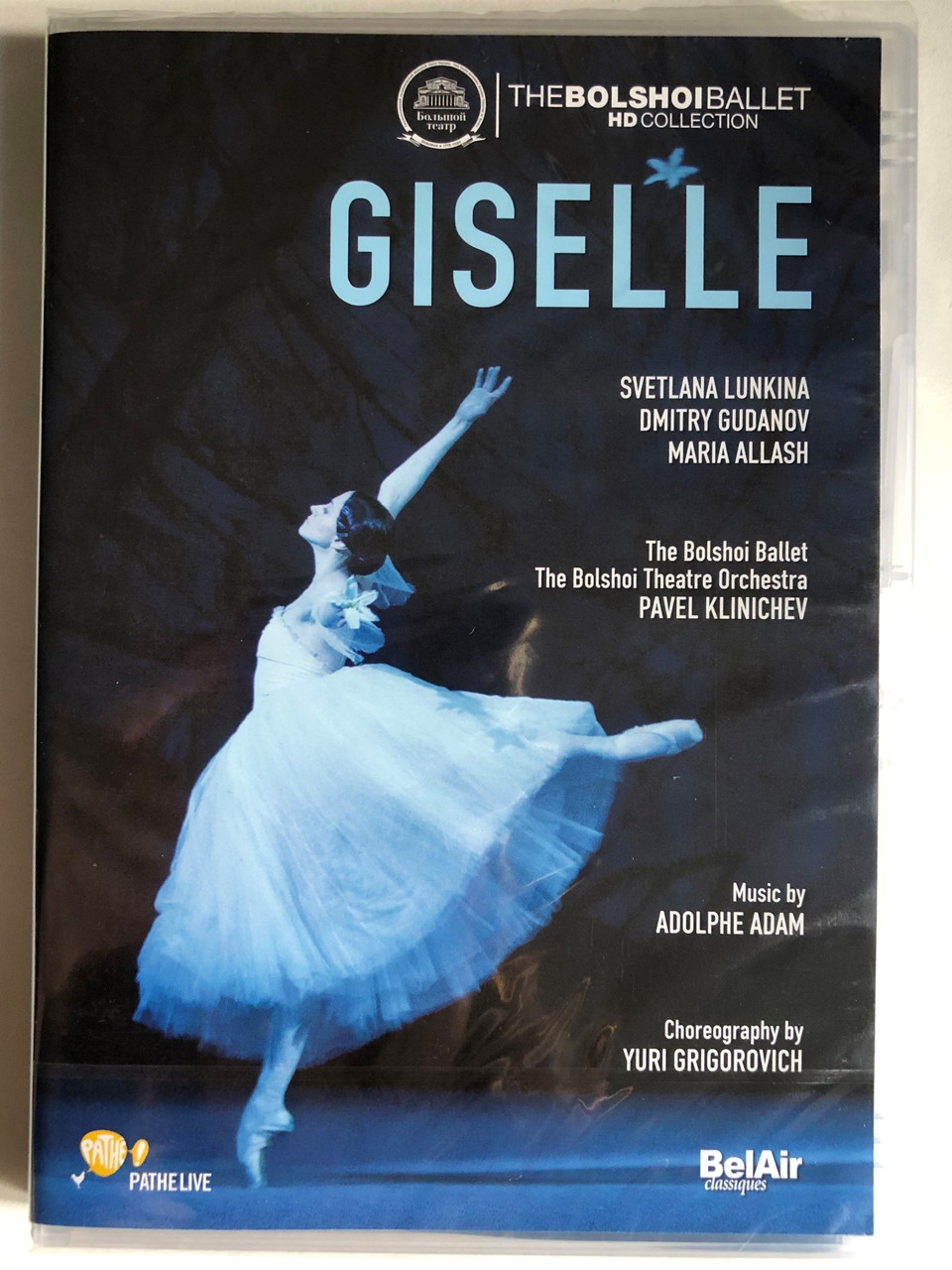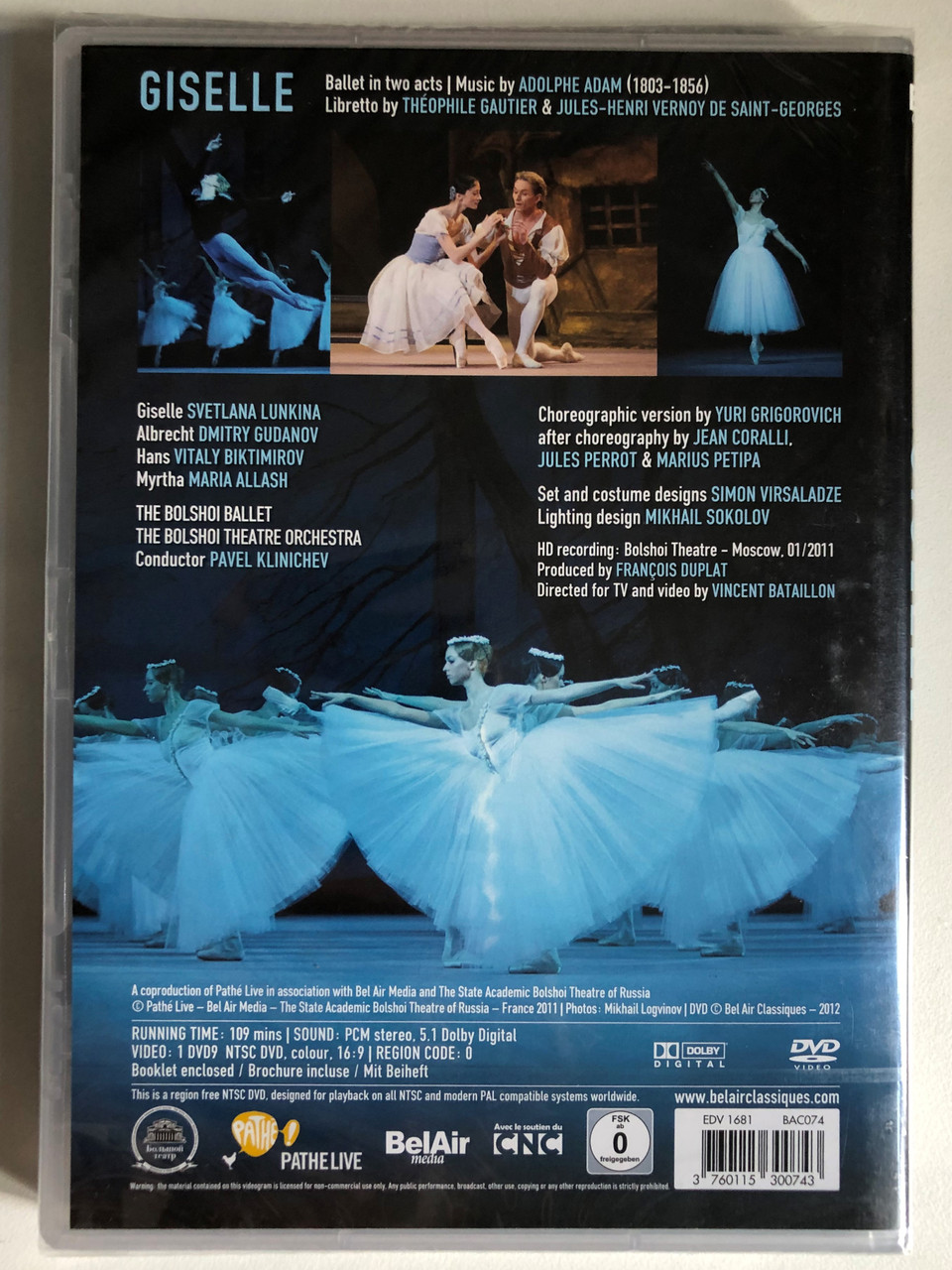Description
Giselle / Ballet in Two Acts / Music by ADOLPHE ADAM / Libretto by THEOPHILE GAUTIER & JULES HENRY VERNOY DE SAINT-GEORGES / THE BOLSHOI BALLET / THE BOLSHOI THEATRE ORCHESTRA / Conductor PAVEL KLINICHEV / DVD
Format: NTSC
Run time: 109 Minutes
UPC: 3760115300743
- Aspect Ratio : 1.77:1
- Is Discontinued By Manufacturer : Yes
- MPAA rating : Unrated (Not Rated)
- Product Dimensions : 5.39 x 0.79 x 7.44 inches; 3.74 Ounces
- Item model number : BELC74DVD
- Media Format : Multiple Formats, Classical, Color, NTSC, Widescreen
- Release date : June 26, 2012
- Actors : Bolshoi Ballet
- Dubbed: : None
- Subtitles: : French, English, German
- Studio : Bel Air Classiques
- Number of discs : 1
Giselle , originally titled Giselle, ou les Wilis (French: [ʒizɛl u le vili], Giselle, or The Wilis), is a romantic ballet ("ballet-pantomime") in two acts with music by Adolphe Adam. Considered a masterwork in the classical ballet performance canon, it was first performed by the Ballet du Théâtre de l'Académie Royale de Musique at the Salle Le Peletier in Paris on 28 June 1841, with Italian ballerina Carlotta Grisi as Giselle. It was an unqualified triumph. It became hugely popular and was staged at once across Europe, Russia, and the United States.
The ghost-filled ballet tells the tragic, romantic story of a beautiful young peasant girl named Giselle and a disguised nobleman named Albrecht, who fall in love, but when his true identity is revealed by his rival, Hilarion, Giselle goes mad and dies of heartbreak. After her death, she is summoned from her grave into the vengeful, deadly sisterhood of the Wilis, the ghosts of unmarried women who died after being betrayed by their lovers and take revenge in the night by dancing men to death by exhaustion (a popular theme in Romantic-era ballets). Led by Myrtha, the Queen of the Wilis, they target Albrecht when he comes to mourn at Giselle's grave, but her great love frees him from their grasp. They gain their power in numbers as they effortlessly move through dramatic patterns and synchronized movements and control the stage with their long tulle dresses and stoic expressions, creating an ethereal atmosphere that builds as they gradually close in on Albrecht. By saving him from the Wilis, Giselle also saves herself from becoming one of them.
Librettists Jules-Henri Vernoy de Saint-Georges and Théophile Gautier took their inspiration for the plot from a prose passage about the Wilis in De l'Allemagne, by Heinrich Heine, and from a poem called "Fantômes" in Les Orientales by Victor Hugo.
Jean Coralli and Jules Perrot created the original choreography. The role of Giselle was created for Carlotta Grisi as her debut piece for the Paris public, and she was the only ballerina to dance it at the Paris Opera for many years. The traditional choreography that has been passed down to the present day derives primarily from the revivals staged by Marius Petipa during the late 19th and early 20th centuries for the Imperial Ballet in St. Petersburg. One of the world's most-often performed classical ballets, it is also one of the most challenging to dance.


























